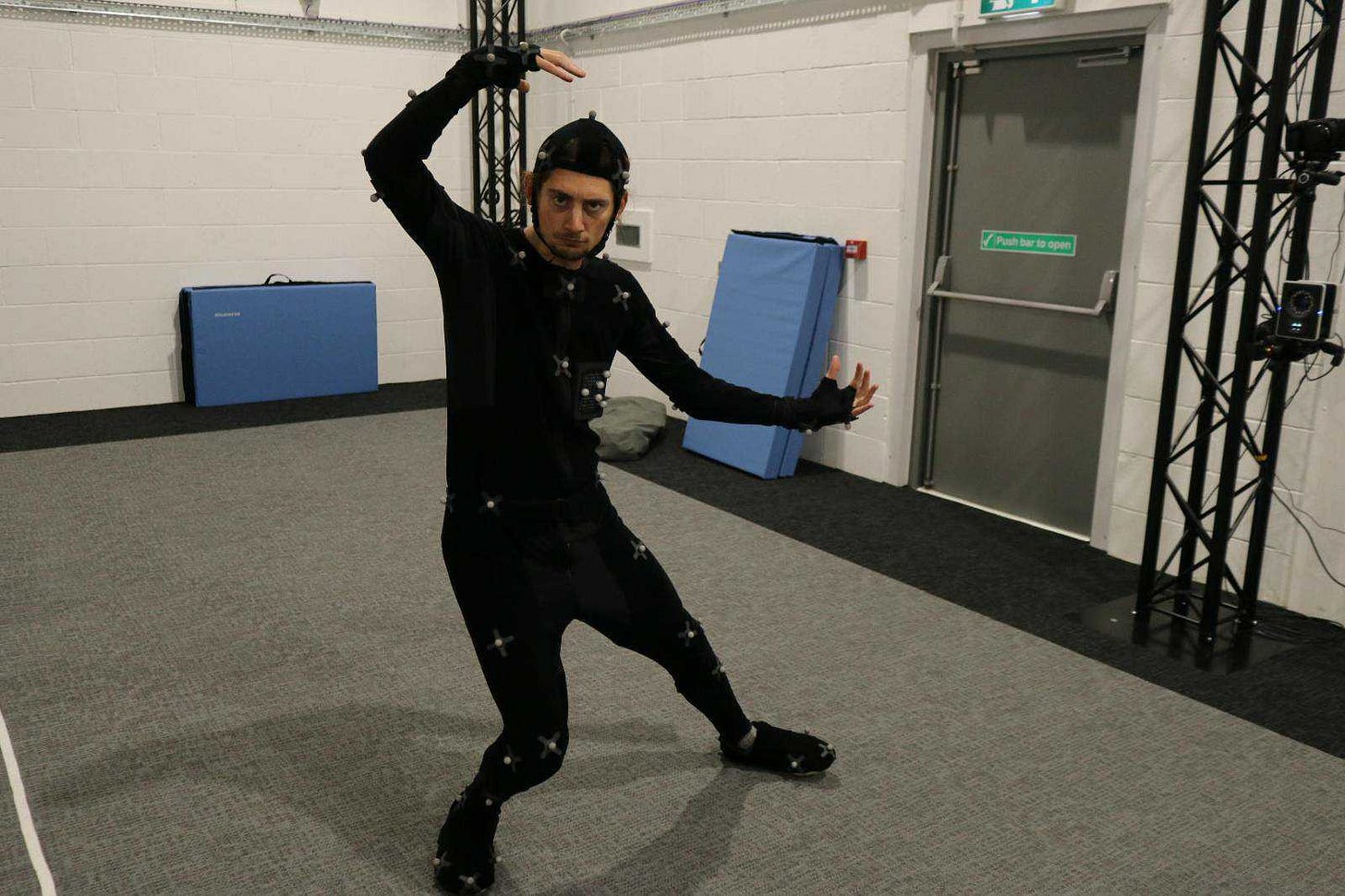Digital Doubles and Synthetic Fakes
The paradox of the digital actor: a more legitimate AI threat
Director Justine Bateman posted a thread worrying about the AI provisions in the actors’ guild contract. She highlights two concerns:
Actors’ faces and bodies being “reskinned,” redubbed, and otherwise modified beyond the control of the performers, yielding “digital doubles.” Bateman: “Generative #AI can be used to face-replace all the actors with known or synthetic Hispanic faces in order to capture that market.”
AI-brewed “synthetic fake” actors competing with real actors for parts. Bateman: “You will not just be competing with the available actors who are your type, but you will now compete with every actor, dead or alive, who has made their “digital double” available for rent.”
AI concerns have exploded out all over the place this year, but Bateman hits on a trend that is definitely on its way, with (1) far more imminent than (2). And unlike linguistic content replacement, which were triggered by ChatGPT and its kin, AI generation of pre-scripted human behavior is a lot more plausible than AI generation of unscripted human language.
The worries about AI replacing linguistic content creators, whether Hollywood writers or novelists, have been a bit overblown. AI will absolutely supplement writers and likely reduce overall numbers required to generate content, but the biggest pressure will be on boilerplate content: press releases, content farms, grant applications, and other pro forma constructions. The more creativity actually required by writing, the less likely it is that AI will be taking your job anytime soon. AI is stuck at the monkeys-at-typewriters stages, except these monkeys have keyboards with huge numbers of meaningful linguistic phrases on them, not mere letters.
Actors, however, are another story. The problem with language is the complex, holistic web of interlinked associations between words and phrases. Acting is complex, but it is not so sprawling, and there is far more latitude to get away with mechanistic mimicry. Combine that with the ongoing trend of moving everything else in cinematic rendering to virtual computer-generated imagery, and the space for the unmodified, raw human component is shrinking rapidly.
Full motion-capture has gone from being janky and uncanny to reasonably convincing in less than 20 years. Video games do it as a matter of course, as do plenty of science-fiction and fantasy films, and as technology gets cheaper, I don’t see many refusing the appeal of placing actors in any possible setting (historical, fantastic, whatever) for a fraction of the cost of building out actual replicas.
Why, then, not modify the actors themselves? Convincing prototypes of actors being dubbed into other languages with synchronized lip movements already exist. Bateman says, accurately, that actors will become “rag dolls,” with the substrate of human emotion surrounded by a
In rebutting Bateman, Jason George cites autotune as a positive comparison for this sort of modification. We already modify voices, so why not faces? And indeed, this argument goes through as long as you are willing to give up your attachment to unalloyed human expression comparatively unfiltered by technological surgery.
But his argument is self-defeating when it comes to the projected “Synthetic Fakes,” AI-generated actors generated out of the single or even multiple actors. These are definitely coming, but not immediately. The irony is by the time they come around, the legitimately-acted “digital doubles” will be so regularly modified and processed that their connection to their original human actors will have become quite tenuous. By the time unacted AI actors come around, “acting” will already be heavily mediated.
This won’t be true across the board, but the potential for cheap, AI-boosted digital “enhancement” is so tempting that it seems safe to assume that it will become as common as Autotune. Apart from purist niches, the collective conception of what on-screen acting is will become as inseparable from the technology supplementing it as singing is becoming today.
It’s another example of what I describe at some length in my book Meganets: the displacement of unalloyed “humans” at the center of society by human-technological amalgams. Technology (AI or otherwise), however, inevitably prioritizes the more homogeneous, neatly abstractable aspects of what’s put into it over individual particularities, and so the distinctiveness of any individual actor will come up against the greater force of the computational analysis of patterns among all actors. “Acting” will become less a form of personal expression and more a science of statistical commonality.
Whether this is a threat, I suppose, depends on how much you value those particularities and what benefit you think they confer.




